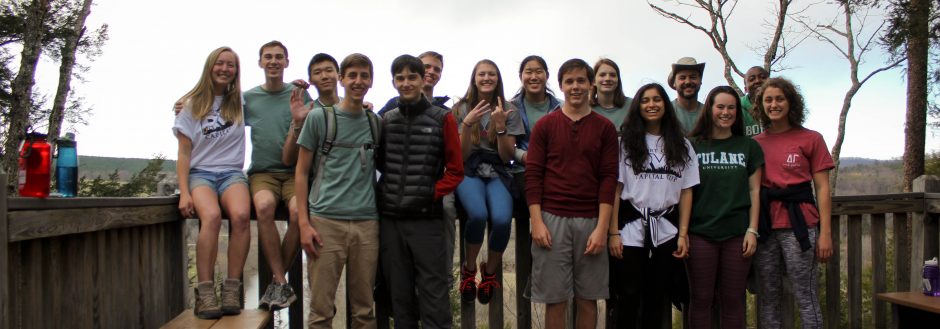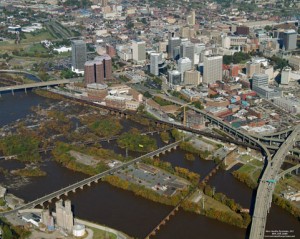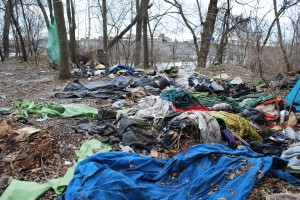In order to motivate people to change their behavior, they must first have a sense of community. They must then gain awareness of the problem and appraise the situation. Only then will they be motivated to activism.
This is the model of behavior is promoted by Dr. Forsythe. Throughout this course I have noticed it to be true in my own behavior and the behavior of others. In class, we talked about a survey that demonstrates this quite effectively. It showed that individuals who knew that they lived in the Upham brook watershed and knew that it was polluted were more likely to be willing to help in watershed cleanup activities. Furthermore, while many of them said that they thought streams were important to the environment, few seemed aware of the connection between the health of the watershed and the health of streams.
Dr. Forsythe’s model has been true in my own thinking throughout the course of this class. Although I was aware of watersheds I had not appraised their importance or thought much about my place. This change has motivated many of us to action, for example I never would have chosen to spend my volunteer hours cleaning up on a small island in the middle of the James River. I would not have known that such a place existed. Furthermore I would not have understood the extent to which the trash on the island affects the health of the entire river downstream.
The clean up made me aware of a whole new set of issues. I had not thought about the poverty or homelessness problems in Richmond and had never thought about how difficult a problem it was to solve. I talked about this in my own blog. In Jenni’s blog, she says “When someone new moves in, Ralph White said, he approaches them and explains how the volunteer cleanups work and asks them to do their part–inevitably, this gesture of respect forges a friendly relationship between the homeless community and the park system.” This is evidence of a case in which with a sense of community and recognition of the problem it is possible to change people’s behavior.
This idea of spreading awareness and appraisal was also important to my other volunteer work. When Anne and I volunteered for the Sierra Club at the Environmental Film Festival at the Byrd, I realized that spreading such awareness was what the festival was all about. By putting these films in such an easily accessible form we were enabling people to have important discussions as they walked through the lobby. This experience also made me aware of how important it is to be conscientious in your appraisal of a situation. The film The Atomic States of America explained both sides of the problem. It discussed the benefits of clean nuclear power but condemned the nuclear power plants that leeched toxic chemicals into the surrounding environment. This reminded me that there are many sides to any story. Through trying to make clean nuclear power affordable, the reactors are under regulated and sometimes in bad locations. This is the case with one reactor on the unstable fall line outside New York City. One thing I did not like about this genre of film is the manipulative emotional appeals. In particular, this documentary showcased a dad whose daughter got cancer from the chemicals leeched by a power plant. It followed his fight for justice against the plant in order to motivate the viewer. Although this is an effective persuasive technique I feel the extended focus on this segment of the documentary distracts from the real issues involved in the regulation of nuclear power plants. It is important to appraise a situation for yourself, to do independent research before acting on an issue.
We got an opportunity to do such research when working on our group project. As a non-bike rider I was initially not aware of the issues associated with biking on our campus. Now we are in the process of appraising the issues. At first it seems simple. Bikes: good. Cars and fossil fuels: bad. However, the actual implementation of a plan to improve the bike program is difficult. First we ran into the obstacles of our limitations as students. When I interviewed Margaret Moore who has worked on the problem of bikes on campus last year, she reconfirmed what we had though about the difficulties in working with anyone form the City of Richmond, telling stories of cancelled meetings. What it comes down to is that the government already employs city planners to work on these exact problems. She encouraged us to focus our efforts to what we can do on campus.
On campus we found that there is no cut and dry answer either. At first it seemed simple to try to improve the green bike program. We are looking into making a program like this one, which uses high quality bikes and introduces an aspect of accountability, however the cost of implementing such a program may be prohibitively expensive. Furthermore, insurance costs would prohibit any bike rental program that would allow students to take bikes off campus. Because of these shortcomings, we wonder if our initial inclination toward improving the green bikes program needs revision. Perhaps the schools money would be more effectively spent on an annual used bike sale like at some other schools. This could provide students with affordable bikes that they can take off campus which will be of higher quality than the green bikes. I feel that this process of thinking critically about a real world problem and appraising my personal power to improve the situation is important to activism.
In his synthesis blog, Kenta says “I’ve realized that environmentalism isn’t something one can really give up once they’ve become privy to it. I’ve realized that environmentalism is largely a state of mind, a perspective and a lifestyle.” This is something that I think that we can all say that we have taken away from our experience in Earth lodge. Next year, I will be living in an apartment and will miss living in this community. However, I will bring my bike to get to class. Because of my project I will choose to bike instead of driving when I go downtown. Once you become aware of the earth, of your watershed, of the poverty in your community, of the state of biking, these things become part of your state of mind.
-
Recent Posts
- Third CBL Post
- Empowering Environmental Stewardship Through Transformational Leadership (Synthetic Observation Log 2)
- Motivating Collective Actions To Improve Our Watershed’s Resilience (Synthetic Post 2)
- Second Synthetic Observation Log
- Reflecting on the Past, Present, and Future of the James River(Synthesis Post #2)
Categories
- Community Based Learning (81)
- Gambles Mill Trail (15)
- HJA (1)
- Lit Circle (14)
- Lodge Life (1)
- Portlandness (1)
- Reflection Spot (109)
- Synthesis (93)
- Trips (20)
- Uncategorized (203)
- Westhampton Lake (23)
Log In


